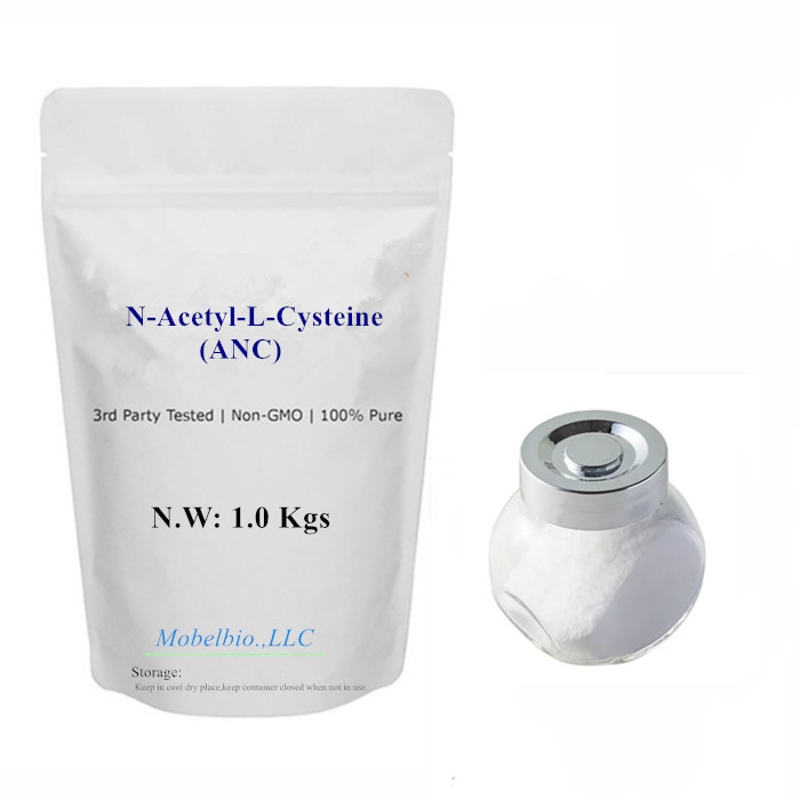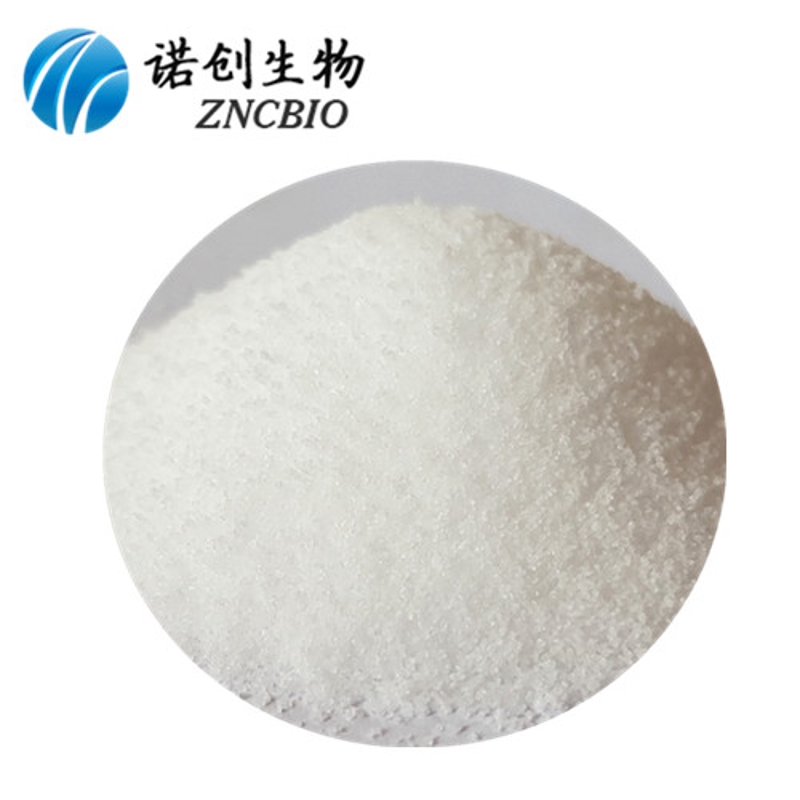The current situation and development trend of amino acid industry in China.
-
Last Update: 2020-07-30
-
Source: Internet
-
Author: User
Search more information of high quality chemicals, good prices and reliable suppliers, visit
www.echemi.com
;.China's amino acid industry has only a short40years of development. The success of fermentation production of MSG in 1965led to the research and development of amino acids., China has become a major producer and consumer of amino acids in, with an annual consumptionof about 1.4in. It is mainly glutamate, lysine and methionine..1methioninein recent years, the demand for methionine in theand abroad has grown strongly year by year, became one of the fastest growing amino acid varieties in demand in 1993 , the world's methionine production was 260, t, in 1999 reached 450, million t, in 2002 55 million . At present, the has an annual production capacity of about 1 million ts in the world and about 700, annual production in . The global total capacity is expected to reach 1.1 million t/around, but the market will remain significantly oversupplied but production will not exceed 700, 000 t. Methionine production is concentrated in Andesu, Degusay and Noves, accounting for about 90% of the world's . . 1.1 China Market Profile in the Chinese market, imports a large number of methionine from abroad every year, has now become a major product of China's chemical RAW materials imports, imports in 2003 amounted to 70, million, imports of more than 1 0 00 000 U.s. Experts predict that by 2010 , the world's demand for methionine will reach 900, t, China's demand will exceed 100, t. In recent years, China's demand for methionine will continue to grow, but but for a certain period of time to rely on a large number of imports to meet. China is the world's 2 largest feed producer, with an annual growth rate of 7% to 8% market demand, and methionine is basically imported . In the Chinese market, Japanese companies accounted for 43% of the , Degusay 21%, Novishi 10%, Andesu 21%, the other accounted for 5%. Due to the rapid expansion of China's methionine market and increasingcompetition in competition, foreign methionine manufacturers have increased sales in China. . at present, China's production of methionine in the process technology, raw materials, equipment, costs and so on there are still some problems to be solved, but the but the hot market has produced a huge temptation for enterprises, enterprises have started methionine scale production of research and development, design and planning. Shandong Tianyi Technology Co., Ltd. to build a methionine pilot device, various technical indicators have reached or exceeded similar products abroad, is expected to be completed and put into operation in 2007, the design scale of 3. million . Benxi Chemical Group, Xinji Chemical and other companies' methionine projects also entered the preparatory stage. . it is understood that Degusay did not ignore the development of methionine medical health care use. 2004 december Degusai in Nanning Wuming, Guangxi, the investment of The A- ( left-handed) methionine new production line was officially completed and put into operation. The new L- methionine production line is the second phase of the enterprise, the production capacity of 400t, is currently the world's largest production of food, pharmaceutical-grade methionine production line, can meet the global 50% of the demand. . 1.2 varieties the nextpage currently, there are 4 varieties of methionine sold in the market, are solid methionine, liquid hydromylytenic amate (MHA), liquid methionine sodium salt and solid hydroxymethine calcium salt. Solid methionine and MHA occupy the top two positions in the world market respectively. The leading product in the U.S. methionine market is MHA, solids are secondary. In China, the opposite is true, but liquid products are gradually recognized and accepted by the market, market share continues to increase. . 1.3 market demand trend global demand for methionine in 2006 is 600, ,700, t, and the methionine market is forecast to grow at an average annual rate of 3% to 4% in the future, with the markets of Europe, Japan and Korea becoming saturated. and the markets in Eastern Europe, Asia (excluding Japan) and South America are developing, especially China, due to the increase in living standards, demand for meat, the annual growth rate of Chinese market demand is about 7% to 8%, is much higher than the global average growth level, , china will be the world's major methionine producers of the main market. . 2 lysine and its salt L- lysine is one of the essential amino acids in the human body, is the world's second largest 2 amino acid varieties after MSG. As of 2006 , the global demand for feed grade lysine in was about 1. t/year, China was about 24 000 t/year. . 2.1 the main varieties in the past lysine development process, more mature products are lysine hydrochloride, protein lysine, liquid lysine and so on. Lysine hydrochloride is characterized by high purity, uniform particles, excellent moisture resistance, the product has been widely accepted in the world. The product's complex production process, the high cost of energy and water, has become an important constraint to its development. The protein lysine and lysine hydrochloride were developed several years ago, but not for long. This product fully overcomes the shortcomings of lysine hydrochloride energy consumption and water consumption, production costs have a high competitive advantage. The disadvantage is that it is easy to absorb moisture, product stability is poor. With the development of lysine technology, in recent years has developed a liquid lysine, has a lower production cost, but because it is a liquid, transportation difficulties and limit the circulation radius of the product. . 2003 ago, the Market in China was dominated by 98.5% lysine hydrochloride, with a single variety . Dentons Biochemicals developed and produced 65% lysine sulfate in 2003 , and the is the 2 manufacturers of lysine sulfates in the world after the , following the Degu competition, and has a considerable competitive advantage. . 2.2 China's recent development China's lysine industry started in the 90 of the 20th century, nearly 10 years, the market demand for lysine has grown rapidly, has driven production, so that production has developed rapidly. In 2000 , the Dentons Group 15, t lysine plant was completed and put into operation, and by 2006, the production of lysine dentons Group alone had exceeded 250, t, of which the domestic sales volume was about t. In 2006 China's lysine imports decreased by 40% compared with 2005 , some foreign products gradually exited the Chinese market. In recent years, the consumption of domestic lysine in has exceeded imports (Figure 1). . can be seen from the of table 1: 2005 , the total market in China has changed greatly, with the total market at 324.6 million , over the 1 999 the average growth rate of .94 t. . . The proportion of -made lysine has increased year by year, with the increasing from 18.48% 1999 to 83.18% in 2005 . The average annual growth rate 28.74%. . (NextPage) . The proportion of imports of lysine decreased year by year, and the decreased from 81.25% in 1999 to 54.51% of the in 2003. The average annual decline rate 20.08% lysine and its salt imports have decreased since 2003. In 2006 , China's cumulative imports of lysine 249 t, decreased by 54.43 percent over the same period last year. Exports of lysine and its salts have increased year by year, with exports from to 2005 beginning to exceed imports. In 2006 China's cumulative exports of lysine 429 million t, an increase of 121.27% over the same period last year , mainly from Jilin, accounting for 80.49% of China's total lysine exports. . 2.3 market outlook and countermeasures first, feed will increase substantially. It is expected that by 2010 , China's demand for feed lysine in will reach hundreds of thousands of tons. Second, there is the high demand for medicine and other fields. Amino acid large infusion has always been a large clinical use of the varieties, lysine is one of its main parts. In addition, in recent years a variety of amino acid beverages are in Europe and the United States, Japan and South Korea and other developed countries, will be expanded to China and other developing countries. The use of amino acids in cosmetics, especially in high-grade cosmetics, is also increasing. . Although the lysine market is optimistic for a long time in the future, but in recent years The supply of lysine in China will be much larger than demand, inter-firm cost competition.
This article is an English version of an article which is originally in the Chinese language on echemi.com and is provided for information purposes only.
This website makes no representation or warranty of any kind, either expressed or implied, as to the accuracy, completeness ownership or reliability of
the article or any translations thereof. If you have any concerns or complaints relating to the article, please send an email, providing a detailed
description of the concern or complaint, to
service@echemi.com. A staff member will contact you within 5 working days. Once verified, infringing content
will be removed immediately.







